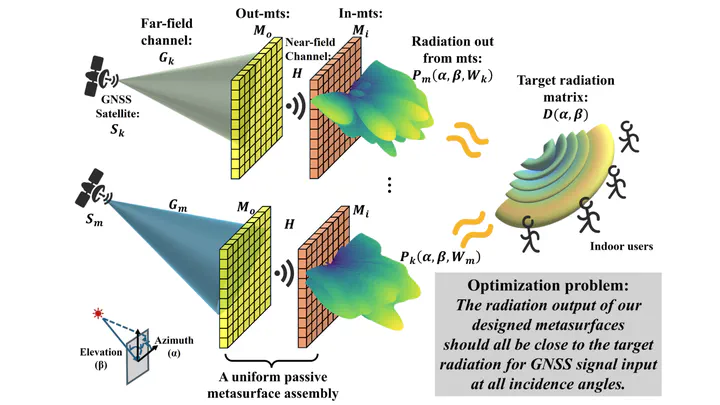GPMS: Enabling Indoor GNSS Positioning using Passive Metasurfaces
Apr 10, 2024·,,,,,,,,·
0 min read
Yezhou Wang
Hao Pan* (Corresponding Author)
Lili Qiu
Linghui Zhong
Jiting Liu
Ruichun Ma
Yi-Chao Chen
Guangtao Xue
Ju Ren
 GPMS Core Optimization Problem
GPMS Core Optimization ProblemAbstract
Global Navigation Satellite System (GNSS) is extensively utilized for outdoor positioning and navigation. However, achieving high-precision indoor positioning is challenging due to the significant attenuation of GNSS signals indoors. To address this issue, we propose an innovative indoor GNSS positioning system called GPMS, which uses passive metasurface technology to redirect GNSS signals from outdoors into indoor spaces. These passive metasurfaces are strategically optimized for indoor coverage by steering and scattering the GNSS signals across a wide range of incident angles. We further develop a novel localization algorithm that can determine which metasurface the signal goes through and localize the user using the set of metasurfaces as anchor points. A distinct advantage of our localization algorithm is that it can be implemented on existing mobile devices without any hardware modifications. We implement the prototype of GPMS, and deploy six metasurfaces in two indoor environments, a 10x50m2 office floor and a 15×20 m2 lecture room, to evaluate system performance. In terms of coverage, our GPMS increases the C-N0 from 9.1 dB-Hz to 23.2 dB-Hz and increases the number of visible satellites from 3.6 to 21.5 in the office floor. In terms of indoor positioning accuracy, our proposed system decreases the absolute positioning error from 30.6 m to 3.2 m in the office floor, and from 11.2 m to 2.7 m in the lecture room, demonstrating the feasibility and benefits of metasurface-assisted GNSS for indoor positioning.
Type
Publication
In Proceedings of the 30th Annual International Conference on Mobile Computing and Networking